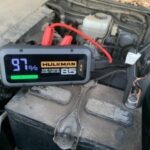The Tesla Model 3 Performance is undeniably impressive in a straight line, boasting exhilarating acceleration that pins you to your seat. However, those considering it as a dedicated track machine or a pure sports car need to understand its limitations when pushed to the extremes. While offering a significant horsepower punch and upgraded brakes compared to the standard Model 3, certain aspects reveal themselves when tackling demanding driving scenarios.
One crucial area is the braking system. Although enhanced for performance driving and delivering commendable stopping power in standard tests (60-0 mph in 109 feet), the brakes of the Model 3 Performance are prone to overheating rapidly under track conditions. Just a single hard braking event from high speed can push them into the critical zone. Tesla’s Track Mode interface, which provides real-time monitoring of brake, motor, and battery temperatures, might even display warnings about potential reductions in braking performance. For serious track enthusiasts, an upgrade to carbon-ceramic brakes would be a transformative improvement.
Furthermore, the Model 3 Performance exhibits noticeable body roll when cornering at high speeds. The car tends to lean considerably on the outer front tire, leading to understeer upon corner entry, followed by a tendency towards slight oversteer as you exit. For casual track days or spirited drives on canyon roads, the Model 3 Performance remains enjoyable and engaging. However, at its absolute limit, the suspension demonstrates excessive give, and the steering system could benefit from enhanced feedback to the driver, particularly for nuanced track driving.
Finally, while the Tesla Model 3 Performance boasts an impressive EPA-estimated range and achieves commendable figures in real-world range tests, its battery capacity diminishes considerably under demanding track use. After a series of performance tests and several laps on a handling circuit, the battery charge can plummet from full to 50%, highlighting the energy demands of high-performance driving on an electric vehicle.
In conclusion, the Tesla Model 3 Performance delivers impressive horsepower and straight-line speed, but falls short of being a truly dedicated track car in its stock configuration. Its braking, handling, and battery depletion characteristics become apparent when subjected to rigorous track driving, revealing areas where further refinement would be necessary to meet the expectations of serious performance enthusiasts.
